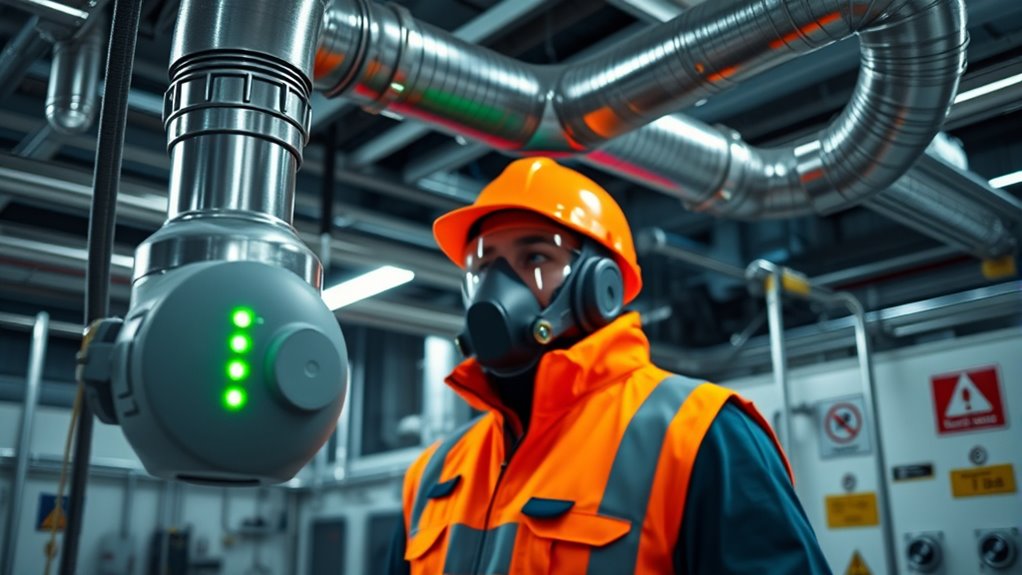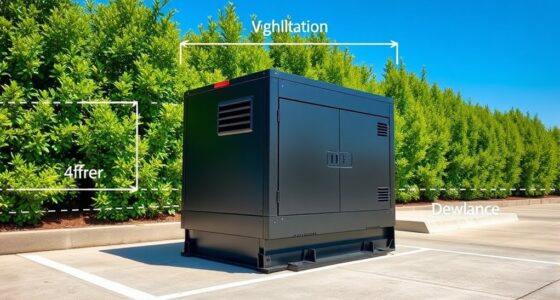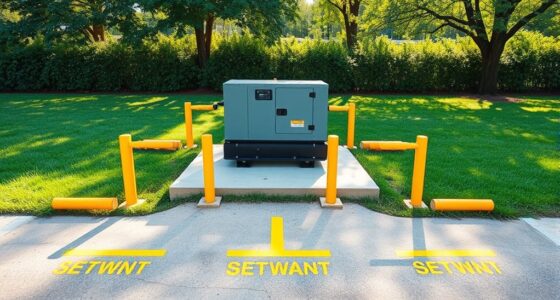Carbon monoxide (CO) is an invisible, odorless gas made when fuel doesn’t burn fully. It’s very dangerous because it can cause headaches, dizziness, or even death without you realizing it. Exhaust systems in cars and appliances are designed to safely direct CO outside, but leaks can still happen. Knowing how to spot symptoms or what safety steps to take helps protect you and your loved ones. Keep going to learn more about staying safe around CO and exhaust systems.
Key Takeaways
- Carbon monoxide is a colorless, odorless gas from incomplete fuel burning, making detectors vital for safety.
- Properly designed exhaust systems safely direct gases outside, preventing leaks and reducing health risks.
- Recognize CO poisoning symptoms like headaches, dizziness, and nausea for early detection and prevention.
- Ensure vehicle exhausts are well-maintained, ventilated, and checked regularly, especially in enclosed spaces.
- If CO exposure is suspected, move to fresh air immediately, call emergency services, and ventilate the area.
What Is Carbon Monoxide and Why Is It Dangerous?
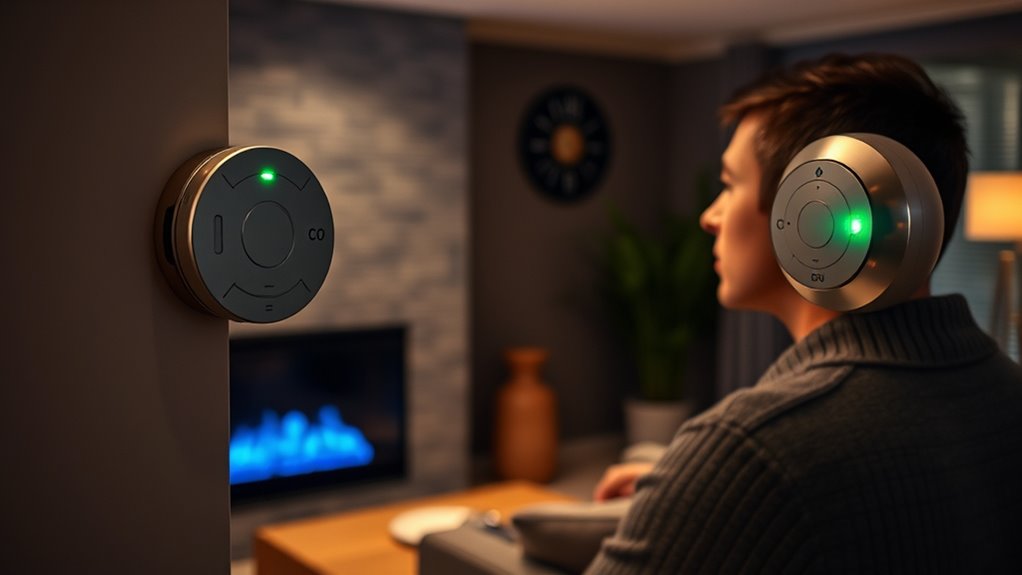
Have you ever wondered what carbon monoxide (CO) is and why it poses such a serious threat? CO is a colorless, odorless gas that can quickly reduce indoor air quality, making it hard to detect without special devices. It’s produced when fuels like gasoline, natural gas, or wood don’t burn completely. Because you can’t smell or see CO, installing carbon monoxide detectors is essential for safety. These detectors alert you before dangerous levels build up, giving you time to ventilate and evacuate. Without proper detection, CO can cause headaches, dizziness, or even death in severe cases. Understanding how proper detection methods work is crucial for preventing poisoning. Protect yourself and your loved ones by understanding how CO impacts indoor air quality and ensuring you have reliable detectors in your home.
How Exhaust Systems Work and Their Safety Features
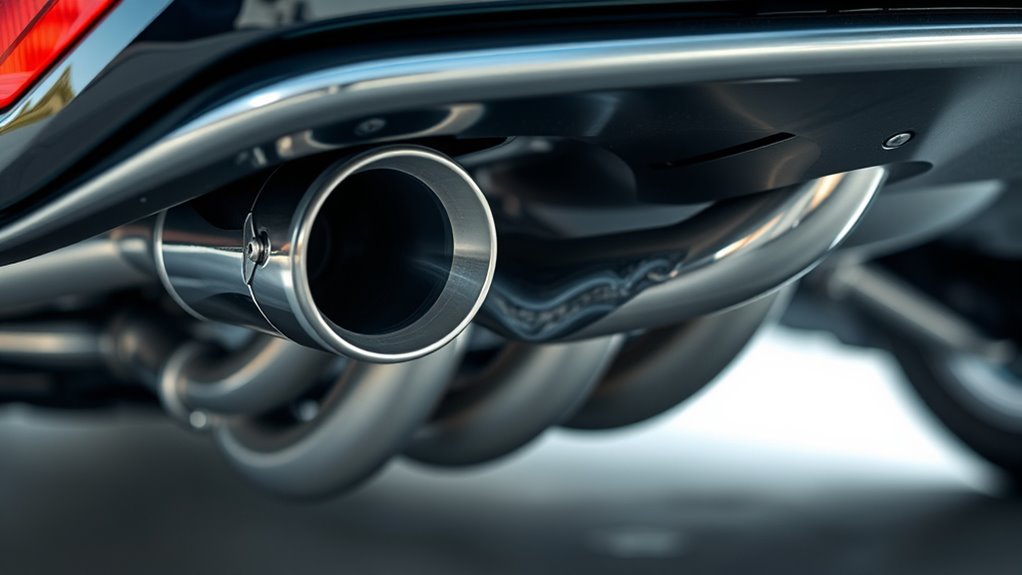
| Component | Function | Safety Feature |
|---|---|---|
| Exhaust pipes | Direct gases outside | Sealed connections prevent leaks |
| Muffler | Reduces noise | Noise muffling technology |
| Catalytic converter | Neutralizes harmful emissions | Lowers toxic gases |
| Resonator | Further noise reduction | Sound dampening |
| Sensors | Detect leaks or blockages | Alerts for maintenance |
| Exhaust system design | Ensures proper airflow and prevents backpressure issues | Proper design minimizes system failures |
Recognizing Symptoms of CO Poisoning
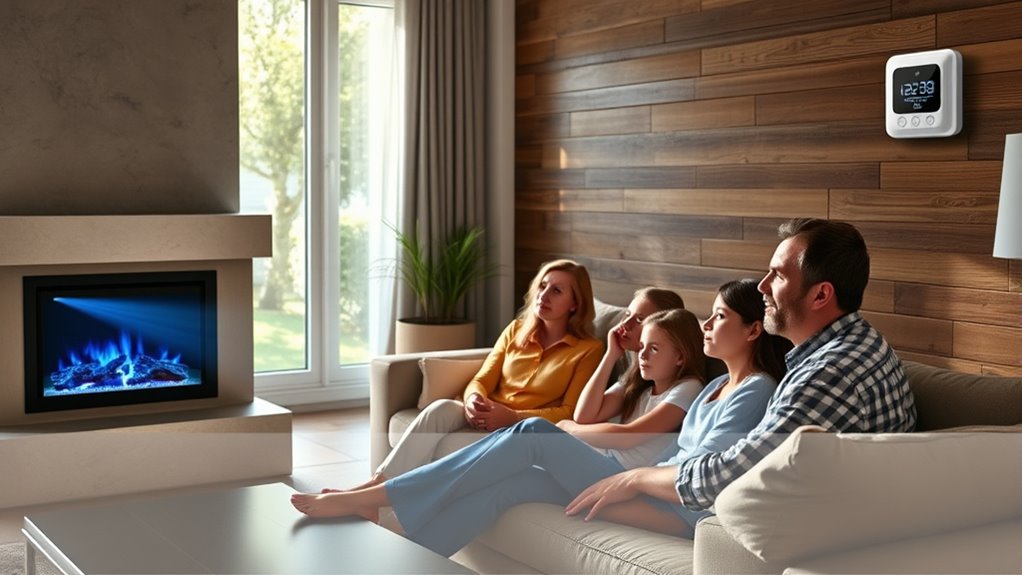
Recognizing the symptoms of carbon monoxide (CO) poisoning is vital because this colorless, odorless gas can cause harm before you even realize there’s a problem. Poor indoor air quality from CO can lead to symptoms of exposure that easily mimic other illnesses. You might feel headaches, dizziness, weakness, or nausea, and in more severe cases, confusion or loss of consciousness. These signs often develop quickly and may be mistaken for flu or fatigue. If you notice these symptoms, especially if they improve outdoors or away from potential CO sources, you should take immediate action. Early detection of CO poisoning is essential to prevent serious health risks. Paying attention to your body’s signals helps guarantee your indoor air remains safe and healthy. Understanding dream symbols can help reveal subconscious concerns about safety and health, emphasizing the importance of staying alert to warning signs.
Tips for Staying Safe Around Vehicle Exhausts
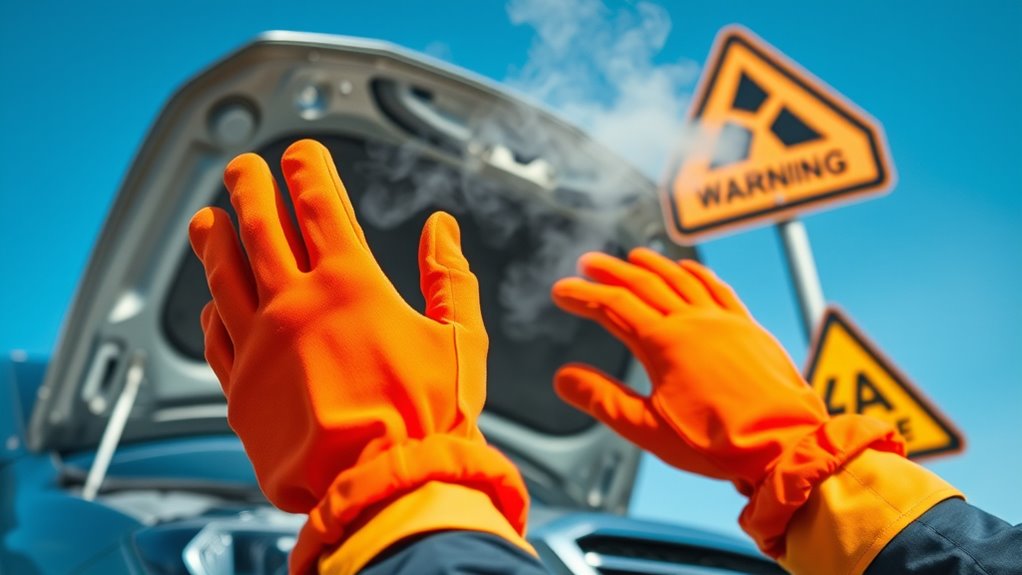
Being aware of the symptoms of CO poisoning helps you stay alert to potential dangers, but it’s equally important to know how to prevent exposure from vehicle exhaust. Always guarantee proper vehicle ventilation, especially when working near engines or in enclosed spaces. Regular exhaust leak detection is essential—listen for unusual noises or check for visible signs of leaks like black soot or a rotten egg smell. Never run a vehicle in an enclosed area, even for a short time, as exhaust fumes can quickly accumulate. Keep exhaust systems well-maintained and promptly repair any leaks. If working around vehicles, use appropriate protective gear and work outdoors whenever possible. Security systems can also serve as a deterrent to theft or unauthorized access around your property, adding an extra layer of safety. These precautions help reduce your risk of exposure and keep you safe around vehicle exhausts.
What to Do If You Suspect CO Exposure
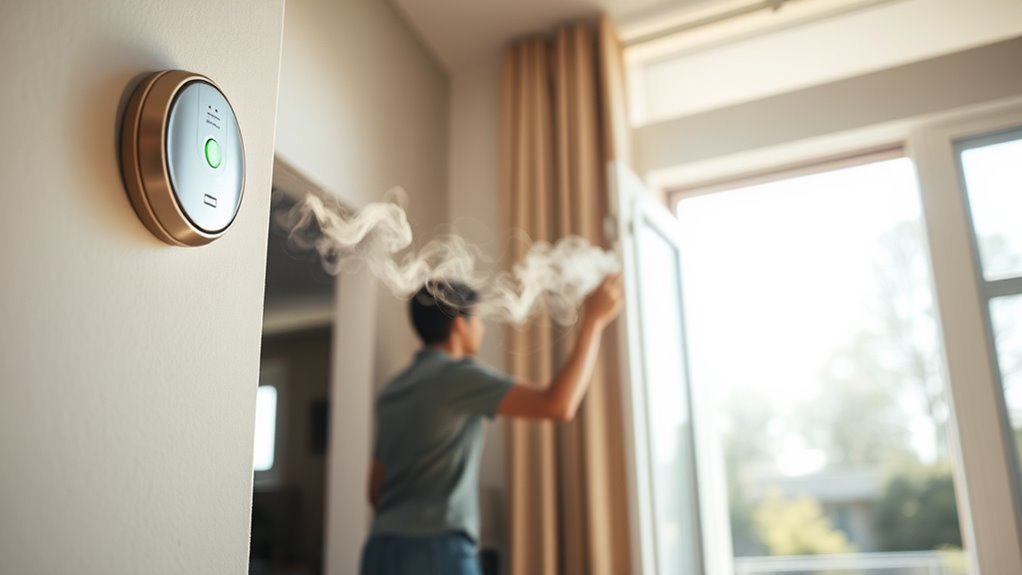
If you suspect you’ve been exposed to carbon monoxide, act immediately to protect yourself and others. First, get to fresh air right away—open windows and doors if indoors. Follow emergency procedures by calling 911 or your local emergency number immediately. While waiting for help, turn off any sources of CO, like appliances or engines. Use ventilation tips such as creating cross-ventilation to clear out the gas. Do not try to diagnose or fix the problem yourself. Keep everyone away from the affected area and avoid re-entering until professionals declare it safe. Remember, prompt action can prevent serious health effects. Prioritize safety by ventilating the space, alerting emergency responders, and evacuating anyone who shows symptoms of CO poisoning. Recognizing the symptoms of CO poisoning early can also help in timely intervention and treatment.
Frequently Asked Questions
How Often Should Vehicle Exhaust Systems Be Inspected for Safety?
You should inspect your vehicle’s exhaust system at least once a year or according to your maintenance schedule. Regular inspections help catch leaks, rust, or damage early, preventing dangerous CO buildup. If you notice strange smells, loud noises, or reduced performance, get it checked sooner. Following your vehicle’s maintenance schedule ensures safety and keeps emissions within legal limits, protecting you and the environment. Stay proactive with inspections for peace of mind.
Can Carbon Monoxide Affect Pets or Wildlife Nearby?
Don’t let the cat out of the bag—carbon monoxide can definitely affect pets and wildlife nearby. It’s a silent threat, impacting their health without obvious signs. Poorly maintained exhaust systems can leak CO, risking pet safety and wildlife impact. Keep an eye on exhaust issues, especially if you notice strange animal behavior or symptoms. Ensuring your vehicle’s exhaust system is in top shape helps protect all creatures around you from this invisible danger.
Are There Any Symptoms of Long-Term CO Exposure?
Long-term CO exposure can cause symptoms like headaches, dizziness, and fatigue that you might not easily recognize. You should regularly monitor your health for ongoing issues such as memory problems, chest pain, or nausea. If you notice these symptoms, seek medical attention promptly. Recognizing these signs early helps prevent serious health problems, so stay vigilant, especially if you’ve been exposed to carbon monoxide over an extended period.
What Safety Equipment Is Recommended When Working on Exhaust Systems?
Ever find yourself working under a car and realize safety isn’t optional? You should wear protective gear like gloves, goggles, and a respirator to shield against harmful fumes. Make sure to implement proper ventilation measures, such as using fans or working outdoors, to disperse exhaust gases quickly. These precautions help prevent CO buildup, ensuring your safety while handling exhaust systems. Always prioritize safety gear and ventilation for peace of mind.
How Do Different Vehicle Types Impact CO Emissions and Safety?
Different vehicle types impact CO emissions and safety due to varying engine designs and emission standards. Smaller cars typically produce fewer emissions, but older or commercial vehicles may emit more CO if their exhaust system maintenance is neglected. You should always follow vehicle emission standards and regularly inspect and maintain exhaust systems to minimize risks. Proper safety precautions, like using protective gear, are essential when working on diverse vehicle exhaust systems to prevent CO exposure.
Conclusion
Staying safe around vehicle exhausts and carbon monoxide is vital—you don’t want to risk turning your life into a smoky disaster. Always make certain proper ventilation, recognize symptoms early, and never ignore warning signs. By being vigilant, you’re like a superhero shielding yourself from invisible, deadly gases that could turn your world upside down in an instant. Keep safety at the forefront, and you’ll breathe easier knowing you’re protected from harm’s sneakiest dangers.
